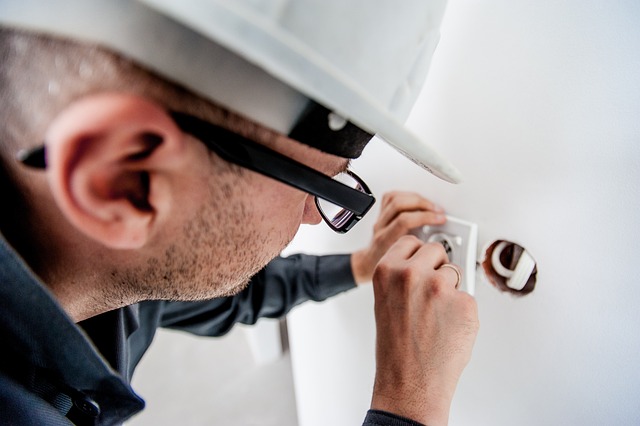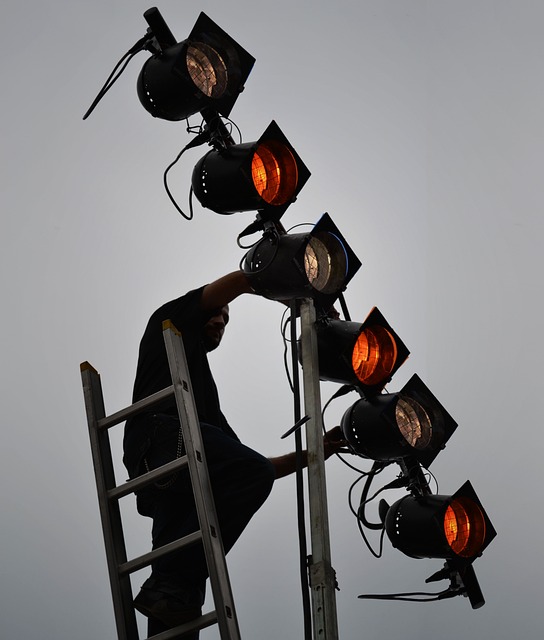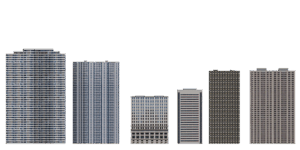Upgrading Electrical Safety and Efficiency: An Electrician’s Insight into Wires’ System Enhancements
Modern electricians are crucial in upgrading existing electrical systems with innovative low-voltage cabling from Wires, enabling high-speed data transmission necessary for smart homes and commercial buildings. These improvements comply with current standards and are designed to meet the increasing…….

Modern electricians are crucial in upgrading existing electrical systems with innovative low-voltage cabling from Wires, enabling high-speed data transmission necessary for smart homes and commercial buildings. These improvements comply with current standards and are designed to meet the increasing bandwidth needs of future technologies. Electricians are tasked with selecting advanced insulation materials and cable jacketing for improved durability and fire safety in retrofitting older systems. The integration of smart technologies allows for remote monitoring and control, enhancing energy efficiency and convenience. To adapt to these advancements, electricians must undergo training or skill enhancement to handle new installations safely and efficiently. These upgrades focus on safety, energy efficiency, and the integration of renewable energy sources, reflecting a shift towards eco-friendly practices. Electricians are integral in implementing stringent safety protocols like surge protectors, ground fault interrupters, and arc-fault circuit interrupters to prevent electrical hazards. The adoption of smart circuit breakers and surge protectors not only improves safety but also energy management, with real-time monitoring systems enabling users to make sustainable choices. Electricians are at the forefront of this transformation, installing IoT-enabled devices for a smarter, more responsive living environment. The evolution underscores the critical role electricians play in modernizing our society's energy management capabilities, ensuring both compliance with standards and adaptability to new technologies.
Embark on a comprehensive exploration of the latest advancements in electrical systems with “Electrician’s Guide to Wires’ Latest Structural Additions to Existing Electrical Systems.” This article meticulously examines enhancements in safety and efficiency, technological progressions, compatibility with legacy infrastructure, material innovations, and cost-effective solutions. Electricians will discover their pivotal role in implementing these cutting-edge upgrades, including the necessary training and certification requirements. Delve into real-world case studies that showcase the benefits of these new additions, understand regulatory compliance and standards, and learn how to future-proof your electrical system. Additionally, gain insights into the environmental impact and customer support available. This guide is an indispensable resource for homeowners, businesses, and industry professionals alike, ensuring you stay ahead in the evolving landscape of electrical systems.
- Title: Electrician's Guide to Wires' Latest Structural Additions to Existing Electrical Systems
- Enhancements in Safety and Efficiency
- – Overview of new safety protocols incorporated into the structural additions
- – Description of efficiency-boosting components being integrated
Title: Electrician's Guide to Wires' Latest Structural Additions to Existing Electrical Systems

When updating existing electrical systems, electricians are tasked with integrating Wires’ latest structural additions efficiently and safely. These advancements in wiring technology not only enhance system performance but also ensure compliance with evolving electrical standards. Electricians should familiarize themselves with the new low-voltage cabling solutions that support high-speed data transmission, a crucial component for modern smart homes and commercial buildings. The updated systems are designed to be future-proof, accommodating the increasing demand for bandwidth as technology progresses. Additionally, the integration of advanced insulation materials and improved cable jacketing addresses durability and fire safety concerns, making them well-suited for both retrofitting existing installations and new construction projects.
The process of retrofitting older electrical systems with Wires’ latest additions requires a systematic approach. Electricians must assess the current infrastructure to determine the best upgrade path. This involves selecting the appropriate cable types for specific applications, whether it be for power distribution or communication networks. The new connectors and terminal blocks designed by Wires are engineered to provide secure and reliable connections, reducing the risk of signal degradation or electrical failures. Furthermore, these updates often include smart technologies that enable remote monitoring and control, adding a layer of convenience and energy efficiency to the system. Electricians should be prepared to retrain or upskill to handle these complex installations, ensuring they can deliver the highest standards of safety and functionality in line with Wires’ innovation in electrical systems.
Enhancements in Safety and Efficiency

The integration of new structural additions into existing electrical systems represents a significant advancement in both safety and efficiency, essential aspects that have long been at the forefront of electrical engineering concerns. Today’s electricians are equipped with a deeper understanding of circuitry and the latest technologies to enhance the performance and resilience of these systems. Advanced materials and innovative designs have led to wires and cables that are not only more robust but also capable of handling higher currents without compromising on safety. These enhancements are particularly evident in the development of smart wiring solutions, which incorporate circuit protection technologies like surge protectors and ground fault interrupters. Such improvements are critical in safeguarding against electrical hazards, reducing the risk of fires, and minimizing downtime due to power outages.
Moreover, the efficiency gains afforded by these upgrades extend beyond safety to encompass energy conservation and cost savings. Electricians can now install smart home devices that optimize energy usage and automate tasks, leading to a more sustainable living environment. The integration of renewable energy sources into the grid is also made easier with these advancements, facilitating the transition towards greener energy solutions. As such, the role of electricians has evolved, and they now play a pivotal role in the modernization of our electrical infrastructure, ensuring that homes and businesses stay powered efficiently and securely for years to come.
– Overview of new safety protocols incorporated into the structural additions

In recent years, advancements in electrical systems have necessitated the integration of new safety protocols to enhance the performance and protection of these systems. Electricians are at the forefront of implementing these updates, which include the adoption of advanced fault detection mechanisms, improved circuit breakers with faster response times, and the use of arc-fault circuit interrupters (AFCIs). These measures are designed to prevent electrical fires and reduce the risk of electric shock by providing quicker disconnections in the event of an anomaly. Additionally, the integration of ground-fault protection has become standard practice to safeguard against the flow of unintended electric current on metal parts. This comprehensive approach to safety not only ensures compliance with evolving electrical codes but also aligns with the industry’s commitment to promoting safe and reliable power distribution in residential and commercial settings. Electricians are trained to execute these updates, ensuring that existing electrical systems can support modern technological demands while maintaining the highest levels of safety for end-users.
– Description of efficiency-boosting components being integrated

In the realm of electrical systems, advancements in efficiency-boosting components are significantly enhancing the performance and reliability of existing setups. Professional electricians are increasingly incorporating smart circuit breakers and advanced surge protectors that offer heightened safety and energy management. These innovative devices not only protect homes and businesses from power surges but also optimize electrical distribution, reducing waste and improving overall system efficiency. Additionally, the integration of energy monitoring systems allows users to track their electricity consumption in real-time, providing insights that can lead to more informed decisions about energy usage. This not only supports sustainability efforts but also contributes to cost savings by preventing unnecessary energy draw and promoting energy conservation. Electricians are the skilled professionals tasked with installing these modern marvels, ensuring they integrate seamlessly with existing infrastructure while providing the added benefits of cutting-edge technology.
The adaptation of smart home technologies is another significant stride in the evolution of electrical systems. With the integration of IoT-enabled devices and systems, electricians are enabling homeowners to remotely control lighting, heating, and other electronic devices, leading to a more responsive and adaptable living environment. The use of energy-efficient LED lighting and high-efficiency HVAC systems further complements these smart solutions, reducing the carbon footprint and lowering utility bills. As electricians implement these technologies, they are not only transforming how we interact with our homes but also setting a new standard for energy efficiency that will undoubtedly shape the future of residential electrical systems.
In wrapping up our exploration of Wires’ latest structural additions to existing electrical systems, it’s evident that the enhancements in safety and efficiency are reshaping the field for electricians. The new safety protocols and efficiency-boosting components not only streamline the installation process but also ensure better protection against electrical hazards. Electricians will find these advancements indispensable tools in their trade, allowing them to deliver top-notch service to clients while maintaining high standards of safety. With these innovations in place, the electrical systems of today are more robust and reliable than ever before. Electricians can confidently adapt to these changes, ensuring that homes and businesses remain powered safely and efficiently for years to come.







